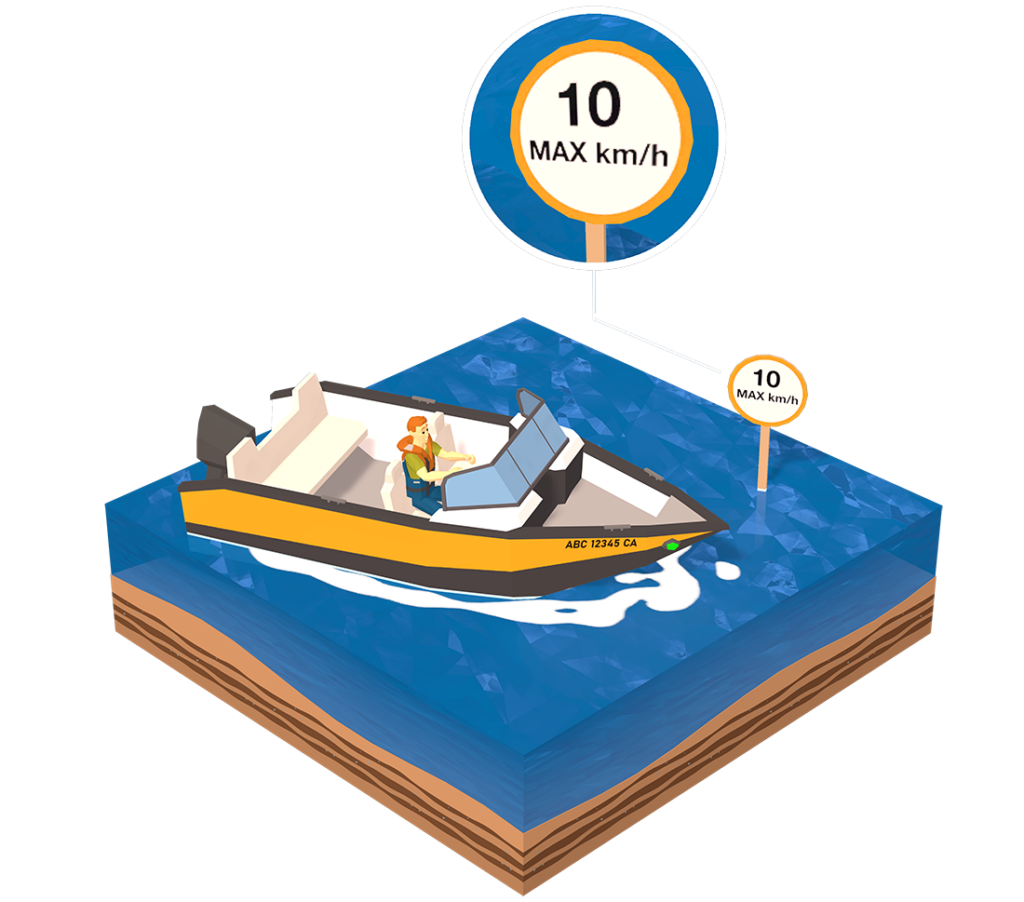There are speed limits for boats just as there are for automobiles. It’s important for boat operators to know the appropriate speed at which to operate their craft in all weather, navigation and traffic conditions, so that proper and effective action can be taken when there is danger of a collision.
Operators need to be familiar with the Vessel Operation Restriction Regulation and other local regulations concerning prohibited vessel types, standardized speed limits (posted or un-posted), noise restrictions and maximum engine power limits specific to certain waters in Canada. Most provinces have an unposted speed limit of 10 km/h within 30 meters of shore (except for starting or dropping off a water skier, rivers less then 100 m. wide, or if there are other postings). There may be other restrictions regarding size or type of boats allowed. All posted restriction signs should be obeyed.
When determining a safe speed, the following factors need to be considered:
- The state of visibility.
- Traffic density, including fishing boats or other boats.
- The state of wind, the sea and currents.
- The proximity of navigational hazards.
Always proceed with caution and at a speed low enough so that the “wake” and “wash” created by your boat does not adversely affect any of the following:
- Other boats, such as anchored boats, grounded boats, wrecks, dredges, tows, rowboats or canoes.
- Structures such as shorelines, docks, floats, or wetlands.
- Other waterway users, such as swimmers.
- Areas in which there are bathing beaches or divers.
- Areas of anchorage.
This is also important when passing small boats such as rowboats, canoes and kayaks.
When your boat is not in sight of other boats, but in or near an area of restricted visibility, you should proceed at a safe speed so as to be able to adapt quickly to the prevailing circumstances. To avoid losing control of the boat, and risk injury or loss of life, always slow down in bad weather. Since boats travelling at high speeds will require more stopping distance in an emergency situation, and since the operator will have less time to react to quickly changing conditions, careful attention is required. Boaters should have the basic knowledge regarding the limitations of the vessel they are operating to ensure safe control of the vessel. All persons on the vessel should also always wear a life jacket/PFD as this is the best way to prevent fatalities.

